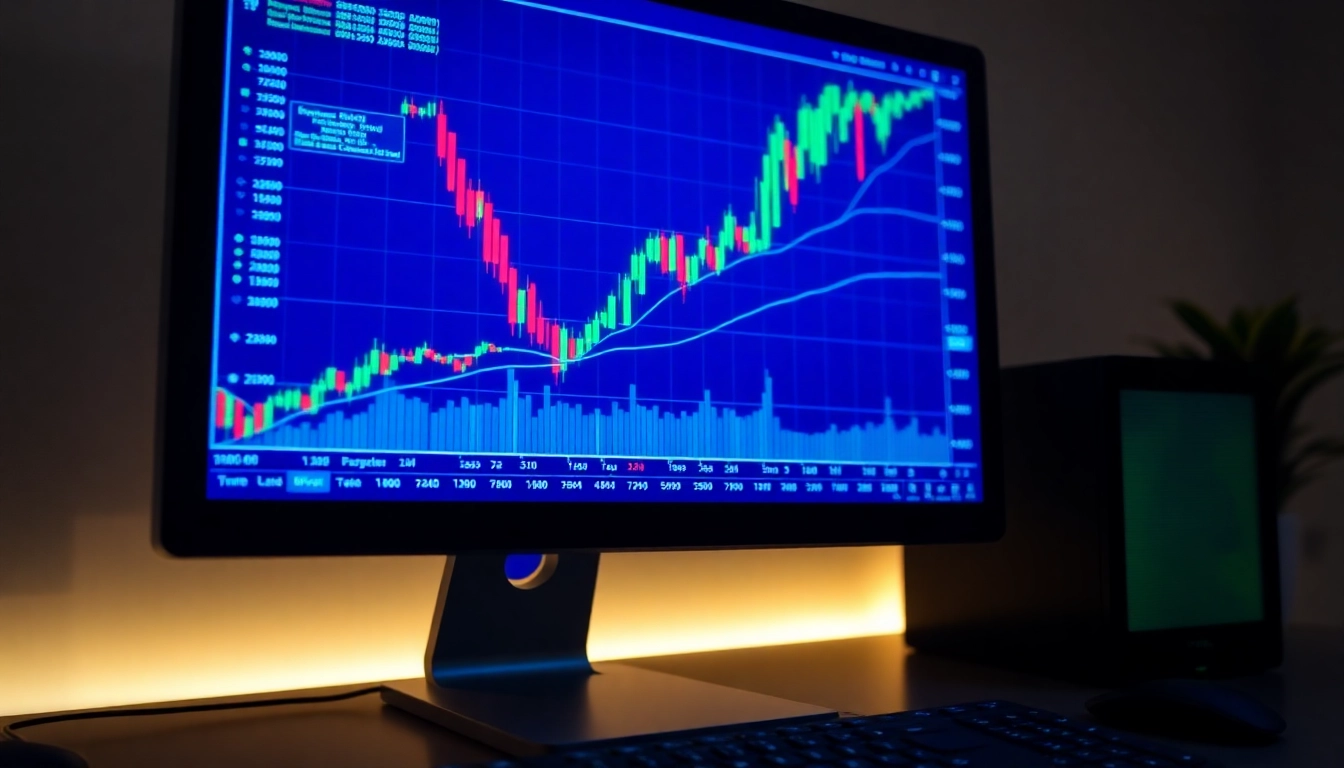Introduction to Trading View and Its Market Significance
In the fast-paced world of financial markets, having access to reliable, real-time data, powerful analytical tools, and an active trading community can be the difference between success and stagnation. One platform that has revolutionized how traders and investors approach market analysis is trading view. Recognized globally, this dynamic platform integrates advanced charting capabilities, social networking, and seamless trading integrations, making it an essential tool for modern market participants.
Since its inception, TradingView has grown into a comprehensive ecosystem, enabling millions worldwide to track, analyze, and discuss financial markets ranging from stocks and forex to cryptocurrencies and commodities. Its significance lies in democratizing access to sophisticated trading tools, fostering collaborative learning, and providing actionable insights at users’ fingertips. Understanding this platform’s core features, benefits, and strategic applications equips traders with the knowledge necessary to excel in an increasingly complex environment.
Using Trading View for Effective Market Analysis
Utilizing Advanced Charting and Technical Indicators
At the heart of TradingView’s appeal is its exceptional charting system. Users can access an extensive library of technical indicators—such as Moving Averages, Relative Strength Index (RSI), Bollinger Bands, MACD, and more—that aid detailed market analysis. The platform allows for multi-timeframe analysis, enabling traders to scrutinize short-term fluctuations alongside long-term trends, thus forming robust strategic insights.
For example, a day trader might overlay RSI and MACD on a 5-minute chart to identify entry and exit points, while a swing trader could analyze weekly charts to understand overarching momentum. Custom indicators can also be created using Pine Script, TradingView’s proprietary scripting language, offering tailored analysis tools that match individual trading styles.
Implementing Custom Watchlists and Alerts to Maximize Opportunities
Time is often of the essence in trading. TradingView addresses this by enabling the creation of custom watchlists for stocks, forex pairs, cryptocurrencies, and other assets. Traders can monitor multiple markets simultaneously, organizing assets based on factors like volatility, sector, or personal strategy.
Pairing watchlists with real-time alerts further enhances responsiveness. Traders can set notifications for price movements, technical indicator thresholds, or news events, ensuring they never miss a critical opportunity. For instance, receiving an alert when Bitcoin surpasses a key resistance level can prompt immediate action, capitalizing on imminent trend changes.
Applying Trading View’s Social Features for Community Insights
One distinctive aspect of TradingView is its social component. Traders can publish their analyses, share ideas, and engage in discussions with a global community. This openness facilitates crowdsourced insights, peer validation, and diverse perspectives that can refine one’s trading strategies.
Community-shared ideas often include annotated charts, market commentary, and forecasts—valuable for traders seeking confirmation or alternative viewpoints. Incorporating social feedback into your analysis can help validate signals or highlight overlooked factors, ultimately leading to better-informed decisions.
Step-by-Step Guide to Setting Up Your Trading View Account
Creating and Customizing Your Trading Dashboard
Getting started with TradingView involves creating a free account that unlocks a multitude of features. Once registered, users can customize their dashboard by selecting preferred chart layouts, setting default watchlists, and choosing color schemes to enhance readability. Effective customization ensures you can swiftly access your most-used tools and data, streamlining your workflow.
Connecting Your Brokerage for Seamless Trading
TradingView supports integration with numerous brokers, allowing for one-click order execution directly from charts. Linking your brokerage account simplifies the transition from analysis to trading, reduces latency, and enhances trade management. To connect, navigate to the trading panel, select your broker from the list, authenticate credentials, and begin executing trades without switching platforms.
Utilizing Mobile Apps for On-the-Go Market Monitoring
Market movements can happen anywhere, anytime. TradingView’s mobile app ensures you stay connected via iOS and Android devices. The app features real-time alerts, interactive charts, and quick order execution, enabling traders to monitor markets, make decisions, and manage trades efficiently on the move. Properly configuring notifications ensures you receive critical updates when they matter most.
Best Practices in Trading View for Consistent Success
Developing Technical Strategies with Trading View Charts
Consistency stems from strategy development rooted in sound technical analysis. Traders should utilize TradingView’s tools to develop and backtest strategies, combining indicators, price patterns, and volume analysis. Regularly reviewing historical charts helps in refining entry and exit criteria, ensuring strategies are robust across different market conditions.
Analyzing Historical Data to Predict Trends
Historical data analysis is critical for understanding market cycles and potential reversals. TradingView offers access to vast archives of past price movements, enabling traders to recognize recurring patterns, such as head and shoulders or Fibonacci retracements. Leveraging this data with statistical tools improves the accuracy of trend predictions and decision-making.
Risk Management and Setting Realistic Goals
Effective risk management is paramount for long-term success. Use TradingView’s alert features to set stop-loss and take-profit levels, trading within your risk appetite. Establish realistic goals based on backtested data and personal experience, avoiding impulsive trades caused by market noise or emotional reactions. Maintaining discipline and adhering to a trading plan are foundational to profitability.
Measuring Performance and Improving Your Trading Skills
Tracking Your Trades and Analyzing Results
Consistent improvement hinges on diligent record-keeping. TradingView’s built-in journal and external integrations help track trades, analyze performance metrics, and identify patterns in successes and failures. Regular review of trading history enables you to recognize strengths, address weaknesses, and adapt strategies accordingly.
Adapting Strategies Based on Market Feedback
Markets are dynamic; therefore, adaptability is key. Use insights gained from performance analysis to tweak existing strategies or develop new ones aligned with current conditions. Supplement technical analysis with fundamental insights, news events, and sentiment analysis expressed within TradingView’s social environment for comprehensive decision-making.
Continuous Learning with Trading View Resources
Success requires ongoing education. TradingView offers a wealth of resources, including webinars, tutorials, trading ideas, and expert analysis. Engaging actively with these materials and participating in community discussions accelerates learning, sharpens analytical skills, and keeps traders updated on new tools and market trends.
